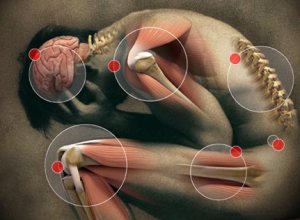Inflammation: Fighting the Elephant in the Room
By Mila McManus, MD



Inflammation[1] lies at the root of most disease pathways, pain, and other symptoms. Reducing inflammation is mission critical to feeling better and avoiding many lifestyle diseases of our day.
The biggest contributor to inflammation is your diet![2] All foods fall on a sliding scale from wonderfully anti-inflammatory to painfully inflammatory. While the goal is to eat a balanced diet, some of which will be slightly inflammatory, most of what we eat should focus on anti-inflammatory and neutral foods.
Ranked for their extraordinarily powerful anti-inflammatory effects, nutrient density, antioxidant-richness, detoxifying ability, and gut-health promoting effects, here are the top 15 of the most anti-inflammatory foods.[3]
First – Berries – Blueberries, Strawberries, Blackberries, and Raspberries
Second – Tomatoes
Third – Mushrooms
Fourth – Broccoli
Fifth – Bell Peppers
Sixth – Sweet Potatoes
Seventh – Onions
Eighth – Apples, Cherries, Oranges
Ninth- Avocado
Tenth – Dark Leafy Greens (the best are collards and spinach, but anything dark green is great)
Eleventh – Black Beans
Twelfth – Lentils
Thirteenth – Chickpeas
Fourteenth – Gluten Free Oats, Millet, Buckwheat
Fifteenth – Macadamia Nuts, Walnuts, Pecans, Almonds, Brazil Nuts, Hemp, and Pumpkin Seeds
Seventy five to eight five percent of our diet is best chosen from the anti-inflammatory and neutral categories. While some meats, dairy, eggs, and alcohol are generally inflammatory, eaten in moderation with anti-inflammatory choices provides a well-balanced, healthy diet.
Need more help? Call our office to schedule an appointment with our nutritionist, Nancy Mehlert, MS.
[1] Inflammation displays in the body as anything that is painful, swollen, red, raw, bloody, or irritated. It applies to all aches and pains, digestive discomfort, painful joints, headaches, skin irritations and rashes, mucous membranes that are chronically producing mucus in the stool or nasal passages.
[2] On the scale, nothing is worse than deep fried combinations of wheat flour, damaged oil, and sugar. This translates directly into donuts and French fries. All fast food falls to this extreme because of the sugar, gluten, and trans-fatty acids in them. Also included in the extremely inflammatory list are candy, cookies, ice cream, and sugary beverages. And lastly, most people are unaware that bread is one of the most highly processed fake foods.
[3] Goodness Lover Pty Ltd. The Inflammation Solution: Top 29 gut Healing & Inflammation – Fighting Foods, 2022.



 by Mila McManus MD
by Mila McManus MD


